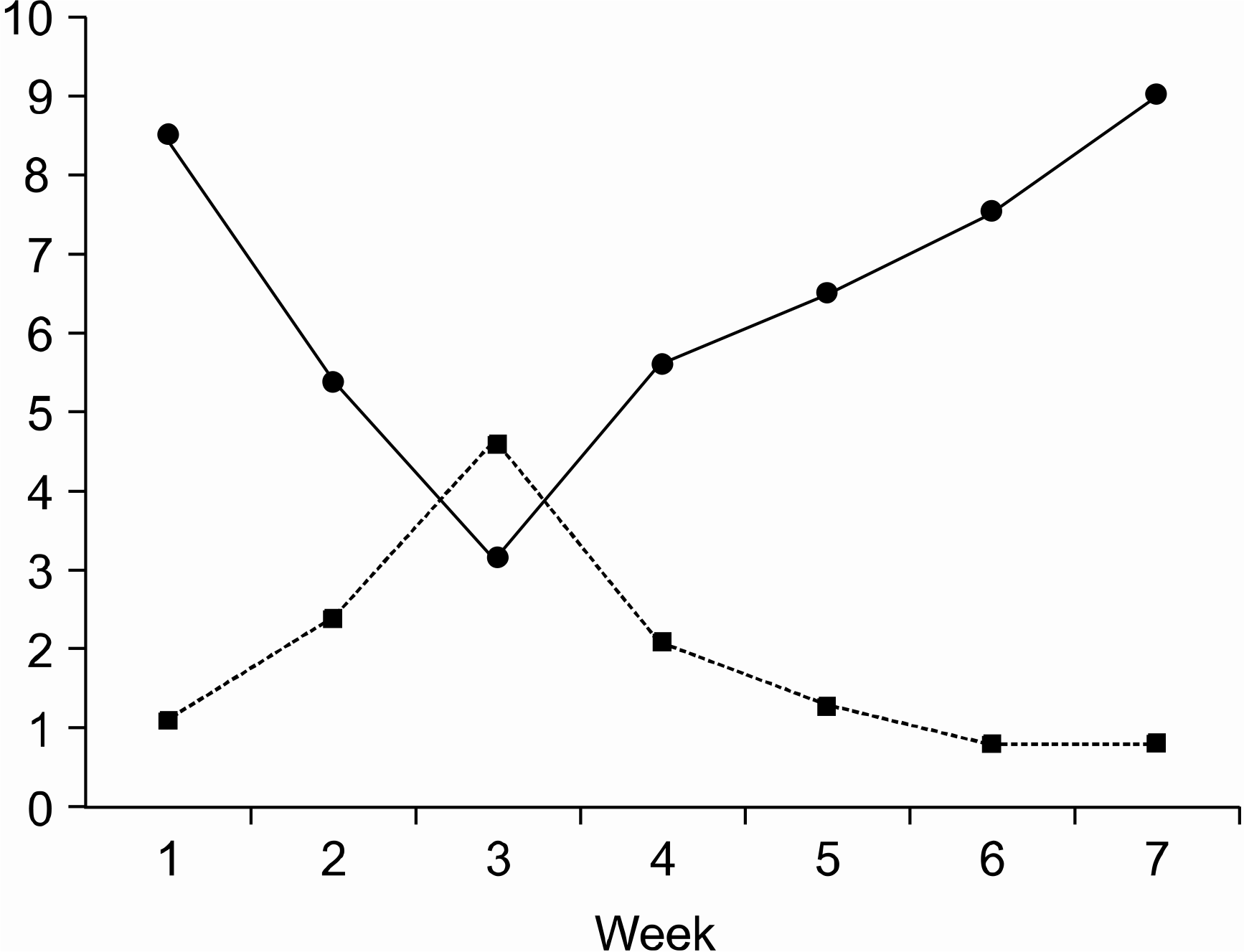Abstract
Waldenstrom macroglobulinemia, which is characterized by elevation of serum monoclonal IgM paraprotein, has recently been responsible for the treatment of purine analogues. Fludarabine, one of purine analogues, has been associated with autoimmune hemolytic anemia in patient with chronic lymphocytic leukemia. However, autoimmune hemolytic anemia after fludarabine treatment for Waldenstrom macroglobulinemia has not been reported. We experienced a case of autoimmune hemolytic anemia after fludarabine treatment for Waldenstrom macroglobulinemia. In this case, hemolytic anemia with positive direct Coombs' test occurred at 20 months after the first administration of fludarabine, relapsed at 5 days after re-administration. This anemia responded to steroid therapy. Autoimmune hemolytic anemia associated with fludarabine therapy can be severe and fatal, especially if a patient is re-treated with this drug after a previous episode of hemolytic anemia.
REFERENCES
1). Tetreault SA, Saven A. Delayed onset of autoimmune hemolytic anemia complicating cladribine therapy for Waldenstrom macroglobulinemia. Leuk Lymphoma. 2000; 37:125–30.
2). Dimopoulos MA, O'Brien S, Kantarjian H, et al. Fludarabine therapy in Waldenstrom's macroglobulinemia. Am J Med. 1993; 95:49–52.
3). Kyle RA, Garton JP. The spectrum of IgM monoclonal gammopathy in 430 cases. Mayo Clinic Proceedings. 1987; 62:719–31.

4). MacKenzie MR, Fudenberg HH. Macroglobulinemia: an analysis for forty patients. Blood. 1997; 239:874–89.

5). Weiss RB, Freiman J, Kwender SL, Diehl LF, Byrd JC. Hemolytic anemia after fludarabine therapy for chronic lymphocytic leukemia. J Clin Oncol. 1998; 16:1885–9.

6). Myint H, Copplestone JA, Orchard J, et al. Fludarabine related autoimmune haemolytic anaemia in patients with chronic lymphocytic leukaemia. Br J Haematol. 1995; 91:341–4.
7). Vick DJ, Byrd JC, Beal CL, Chaffin DJ. Mixed-type autoimmune hemolytic anemia following fludarabine treatment in a patient with chronic lymphocytic leukemia/small cell lymphoma. Vox Sang. 1998; 74:122–6.

8). Di Raimonodo F, Giustolisi R, Cacciola E, et al Autoimmune hemolytic anemia in chronic lymphocytic leukemia patients treated with fludarabine. Leuk Lymphoma. 1993; 11:63–8.
9). Boldt DH, Von Hoff DD, Kuhn JG, Hersh M. Effect on human peripheral lymphocytes of in vivo administration of 9-beta-D-arabinofuranosyl-fluoroadenine-5'-monophosphate. Cancer Res. 1984; 44:4661–6.
11). Byad JC, Dow NS, Howard RS. Marked depletion of natural killer cells in chronic lymphocytic leukemia patients receiving fludarabine: a consideration for future immune-based therapy? Proc Am Soc Clin Oncol. 1997; 16:28a.
12). Dimopoulos MA, Kantarjian H, Estey E, et al. Treatment of Waldenstrom's macroglobulinemia with 2-chlorodeoxyadenosine. Ann Intern Med. 1993; 118:195–8.




 PDF
PDF ePub
ePub Citation
Citation Print
Print



 XML Download
XML Download